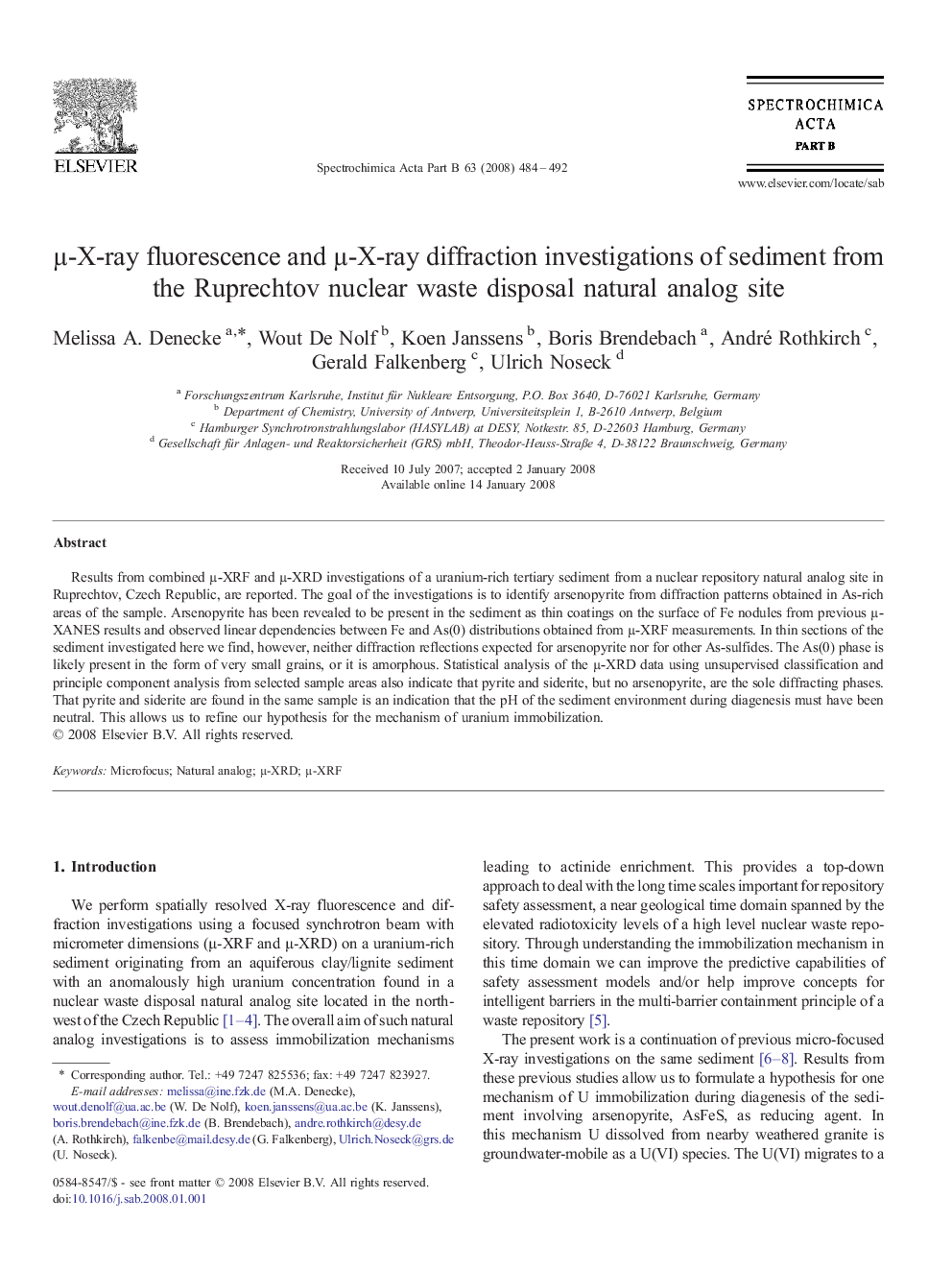| Article ID | Journal | Published Year | Pages | File Type |
|---|---|---|---|---|
| 1240459 | Spectrochimica Acta Part B: Atomic Spectroscopy | 2008 | 9 Pages |
Results from combined µ-XRF and µ-XRD investigations of a uranium-rich tertiary sediment from a nuclear repository natural analog site in Ruprechtov, Czech Republic, are reported. The goal of the investigations is to identify arsenopyrite from diffraction patterns obtained in As-rich areas of the sample. Arsenopyrite has been revealed to be present in the sediment as thin coatings on the surface of Fe nodules from previous µ-XANES results and observed linear dependencies between Fe and As(0) distributions obtained from µ-XRF measurements. In thin sections of the sediment investigated here we find, however, neither diffraction reflections expected for arsenopyrite nor for other As-sulfides. The As(0) phase is likely present in the form of very small grains, or it is amorphous. Statistical analysis of the µ-XRD data using unsupervised classification and principle component analysis from selected sample areas also indicate that pyrite and siderite, but no arsenopyrite, are the sole diffracting phases. That pyrite and siderite are found in the same sample is an indication that the pH of the sediment environment during diagenesis must have been neutral. This allows us to refine our hypothesis for the mechanism of uranium immobilization.
